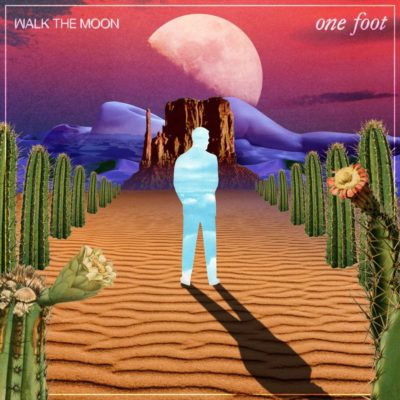It must be paralyzing to be a famous musician.
I find it hard enough to write songs that I feel stand up to my increasingly large oeuvre of material, and I don’t have millions of fans waiting with baited breath for even a hint of my newest work.

I’ve also never delivered an album as relentlessly charming as two of our household’s favorites from 2014: Taylor Swift’s 1989 and Walk The Moon’s Talking Is Hard.
Together, they have dominated our stereos, iPods, and kitchen dance parties for the last three years. Between them, they contain some of the first songs EV6 learned as sing-alongs, including bath nights shouting out the chorus to “Bad Blood” and spinning around in the kitchen while somehow letting the rush of words from “Shut Up and Dance With Me” tumble out of her tiny mouth.
As it happens, the follow-ups to both of those 2014 records dropped on Friday – Reputation and What If Nothing, respectively. Both LPs have the unenviable task of following nearly-flawless smashes, each with a specific sort of sonic gestalt that is easy to imitate but difficult to evolve into something new.
I am fascinated by these sorts of high-wire follow-up records. How many near-perfect albums can you think of that have a near-perfect follow-up? Does Tusk hold up to Rumors? Music to Tapestry? Bad to Thriller? Supposed Former Infatuation Junkie to Jagged Little Pill?
Do you repeat the formula? Do something deliberately and almost obtusely different? Or do you just writing the songs and whatever happens happens?
I spent this past weekend listening to Reputation and What If Nothing. I suspect Swift’s record will going on to be recognized as a total dud which she’ll later renounce; more on that some other time. Today I’m here to talk about Walk The Moon.
One of the reasons I was so obsessed with Talking Is Hard was the specificity with which the band sound-checked famous 1980s artists and their trademark sounds. They used both their songwriting and production to quote the recognizable sonic palettes of acts like Talking Heads, U2, Duran Duran, and Paul Simon.
It was a fun parlor trick, especially when combined with ruthlessly catchy hooks. Yet, to repeat that theme of earworm nostalgia wholesale on a new album wouldn’t work. It would feel stale and expected – an imitation of an imitation.
What’s a catchy, retro band to do? “One Foot” is a good hint, not only because it’s the lead single, but because it comes after a pair of unusual opening tracks on the album.
It certainly sounds a lot like “Different Colors” from Talking Is Hard. It’s also a little ridiculous with its leading falsetto hook garnished with a tuneless little war whoop from the entire band. It’s also pretty plain beneath all the studio dressing, repeating a single four-chord progression the entire song.
I think this band is good when they’re a little ridiculous and plain. Self-consciousness wasn’t behind the best songs of Talking Is Hard, and it’s certainly not a factor with the silly braggadocio of the verses of “One Foot” and the gang chants of the hook.
It’s a song that sounds very much like Walk The Moon and not like anyone else in specific. What feels distinctly gone from this single (and, much of the LP) is the specificity of the band’s retro references as well as an occasional modern pop/rock sameness. “One Foot” feels like a song entirely of today, but also somehow also a song hot off the heels of the Pretty Woman soundtrack in 1990. Maybe that’s because there’s a little hint of the vocal bombast of “King of Wishful Thinking.
We need more unselfconscious music. This song might be calculated as hell – in fact, it’s probably likely to be as the lead single – but that doesn’t stop of from feeling unpredictable and infused with a wild sense of joy.
(PS: Check out this nifty acoustic version – I didn’t expect the songs to have such good bones under all the production.)
(PPS: Here’s the band discussing some of these songwriting challenges.)